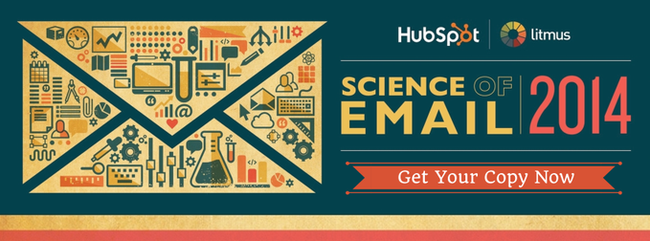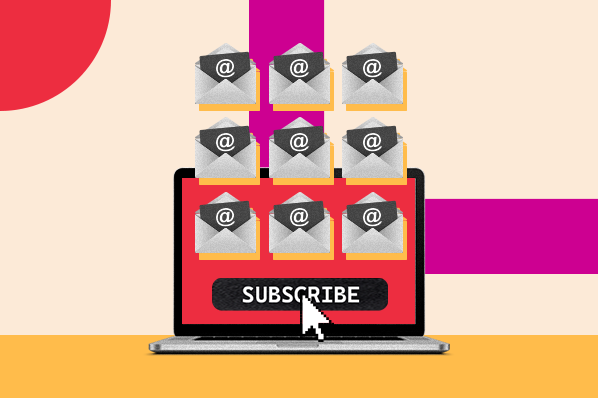Every day, humans make snap judgments. In one Princeton study, participants made assumptions within 100 milliseconds of being exposed to a portrait. In a similar study on virtual bias, researchers at the University of British Columbia compared respondents’ in-person impressions with those obtained by only viewing Facebook photos -- and the results revealed that passive, virtual impressions tended to be more negative.

BuzzStream and Fractl took this idea a step further to determine if any parallels exist in terms of email habits. We surveyed more than 1,200 men and women between the ages of 18 and 64 to find out how they use email, and how gender, age, and level of education impacted specific preferences and behaviors. The results reveal how email etiquette influences someone's perception of other people and compares email habits between different demographics.
Here's what we found.
Brevity is key, especially with older recipients.
When writing an email, every word counts. It starts with your subject line: Open rates drop from 24% to 17% on average when subject lines exceed 35 characters. And with mobile email open rates rising more than 300% since April 2011, the case for brevity is more important than ever.
Exactly 60% of respondents agreed that a concise email is acceptable, while less than 30% expressed similar feelings toward longer emails. Additional findings revealed:
- The opposition to verbose emails increases with age: 70% more respondents between the ages of 55 and 64 find the practice unacceptable compared with those between 18 and 24.
- Females have a slightly higher preference for concise emails compared with their male counterparts: More than 60% of women find shorter emails acceptable, while just over 55% of men share similar views.
- Level of education has no effect on length: The majority of each group -- no degree, bachelor’s degree, and graduate degree -- prefers a concise email over a longer message.
- The top five greetings for all respondents are brief: Each greeting is only one word attached to the recipient’s name.
The most objectionable email trends concern grammar, spelling, and fonts.
In today’s increasingly mobile workforce, the popularity of email continues to rise. According to a study by the Radicati Group, the total number of worldwide email users will exceed 2.8 billion in 2018, with business emails accounting for more than 139.4 billion emails sent and received each day.
And with every email you send, the content has the potential to add to or detract from both your personal and professional reputation. One of the most common mistakes? Sending an email with grammatical errors.
Most would agree on the importance of proofreading emails, but we wanted to determine if some participants were more forgiving about mistakes than others. Our research revealed the following:
- Nearly 80% of all respondents find spelling and grammatical errors the most unacceptable offenses.
- More than 70% of each age demographic found more than one spelling error unacceptable.
- Nearly 10% more females find a spelling error more unacceptable than males do.
- Respondents with graduate degrees are slightly more forgiving of grammatical errors than those with bachelor’s degrees or no degree.
- Exactly 70% of all respondents agree that excessive punctuation should be avoided.
Out of the top 10 objectionable email trends, 4 revolve around fonts -- different font sizes, all-caps subject lines, irregular fonts, and different font colors. Over 60% of all respondents found these practices unacceptable, and further analysis revealed:
- Changes in font size were disliked the most by respondents: Nearly 70% of respondents prefer fonts to be one size.
- The oldest demographic is more receptive to irregular fonts than any other: Less than 30% believe that using irregular typefaces (e.g., Comic Sans, Courier New, Impact, etc.) is “totally unacceptable.”
- The majority of male and female respondents have a preference for a single-colored font.
- More than 85% of respondents prefer an all-lowercase subject line to one in all caps.
- Respondents with a graduate degree tend to be slightly more lenient on multiple font sizes: Nearly 20% find the practice acceptable while less than 15% of respondents without a degree share similar views.
Older generations want to be perceived as more authentic, while younger generations want to sound smarter.
Researchers at Northwestern Law found that online communication has a limiting effect on persuasion, so it’s no surprise that, overall, most respondents admitted to rewriting email to sound more intelligent. In fact, out of the top five characteristics regarding perception, just over 40% of all respondents listed three that related to intelligence.
However, the motive behind rewriting an email can vary by degree and age. Additional findings revealed the following:
- The top five characteristics for perception are exactly the same for male and female respondents: intelligent, knowledgeable, helpful, educated, and reliable.
- Nearly 50% more respondents with graduate degrees want to sound reliable compared with respondents who have no degree.
- More than 55% more respondents between the ages of 45 and 54 rewrite emails to sound more authentic compared with those between 18 and 24.
- The younger demographic prefers to sound more knowledgeable, with nearly 50% more rewriting emails to sound more intelligent compared with 45- to 54-year-olds.
Nearly 80% of respondents agree that etiquette impacts the likelihood that they will respond to an email from a stranger. If you rush to send an email without proofreading, you risk losing business or key networking opportunities.
Knowing when to keep your correspondence short, when to be more formal, and even when it’s appropriate to add a bit of humor will help you develop and nurture valuable relationships. By understanding how age, gender, and level of education influence perception in email correspondence, you can tailor your content to align closely with your recipient’s expectations and ensure stronger, more authentic communication.
Review this deck and the infographic below for these findings and more.


![16 Great Examples of Welcome Emails for New Customers [Templates]](https://53.fs1.hubspotusercontent-na1.net/hubfs/53/36_Welcome%20Email%20Templates.jpg)



![Creating an HTML Email: The Design Guide You Need [+ Free Templates]](https://www.hubspot.com/hubfs/html%20design.png)
![Email Analytics [Research]: 8 Email Marketing Metrics You Should Track](https://www.hubspot.com/hubfs/Untitled%20design%20%2851%29.jpg)


![How to Create a Product Launch Email [Outlines + Templates]](https://www.hubspot.com/hubfs/create-a-product-launch-email_5.webp)
